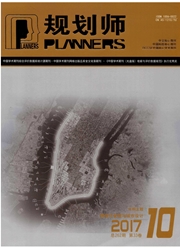

 中文摘要:
中文摘要:
新型城镇化对城乡关系赋予了新的内涵,也对村庄布点规划提出了更高的要求。本文以南京市高淳区为例,对过去规划中的一些做法进行了审视,认为其存在过度减少农村人口总量、过度压低村庄用地面积和过多减少农村居民点数量三大问题。新一轮的村庄布点规划不再采用以总体规模指标逐级匡算的"自上而下"的规划思路,而采用以村庄遴选为核心的"自下而上"的规划思路。村庄遴选采取"适宜性评价+布局优化"的方法,通过多指标综合评价得出村庄布点适宜性的空间格局,再利用空间分析的手段对村庄布局进行优化。在村庄遴选的基础上,通过多轮的村民意见征询得出了规划的正式方案。最终规划效果较上轮规划实现了较大程度的完善,并体现了专家主导、科技支撑与村民参与相结合的特点。
 英文摘要:
英文摘要:
New urbanization has given new meaning to urban rural relationship, but also posed higher demand for village layout planning. The paper takes Gaochun district of Nanjing city as an example, refl ects past approaches in planning, and concludes three major problems: over reduction of rural population, village land use, and village sites. The new round village layout planning adopts bottom-up instead of top-down approach. Village selection uses "suitability evaluation-layout improvement" method: village layout is made by multi-indices evaluation, and then improved with spatial analysis. Farmers' opinion is fi nal y integrated for the fi nal plan. The fi nal plan is distinctively improved from last round and refl ects the cooperation of expertise, science, and farmer participation.
 同期刊论文项目
同期刊论文项目
 同项目期刊论文
同项目期刊论文
 期刊信息
期刊信息
